Metabo C10FCG Handleiding
Metabo
Zaagmachine
C10FCG
Bekijk gratis de handleiding van Metabo C10FCG (53 pagina’s), behorend tot de categorie Zaagmachine. Deze gids werd als nuttig beoordeeld door 46 mensen en kreeg gemiddeld 4.3 sterren uit 23.5 reviews. Heb je een vraag over Metabo C10FCG of wil je andere gebruikers van dit product iets vragen? Stel een vraag
Pagina 1/53

DOUBLE INSULATION
DOUBLE ISOLATION
AISLAMIENTO DOBLE
Model
Modèle
Modelo
C 10FCG C 10FCG(S)•
Compound Miter Saw
Scie à onglets combinée
Sierra ingletadora
SAFETY INSTRUCTIONS AND INSTRUCTION MANUAL
WARNING
IMPROPER OR UNSAFE use of this power tool can result in death or serious bodily injury!
This manual contains important information about product safety. Please read and understand this
manual BEFORE operating the power tool. Please keep this manual available for other users and owners
before they use the power tool. This manual should be stored in safe place.
INSTRUCTIONS DE SECURITE ET MODE D’EMPLOI
AVERTISSEMENT
Une utilisation INCORRECTE OU DANGEREUSE de cet outil motorisé peut entraîner la mort ou de
sérieuses blessures corporelles !
Ce mode d’emploi contient d’importantes informations à propos de la sécurité de ce produit. Prière
de lire et de comprendre ce mode d’emploi AVANT d’utiliser l’outil motorisé. Garder ce mode d’emploi
à la disponibilité des autres utilisateurs et propriétaires avant qu’ils utilisent l’outil motorisé. Ce mode
d’emploi doit être conservé dans un endroit sûr.
INSTRUCCIONES DE SEGURIDAD Y MANUAL DE INSTRUCCIONES
ADVERTENCIA
¡La utilización INAPROPIADA O PELIGROSA de esta herramienta eléctrica puede resultar en lesiones
de gravedad o la muerte!
Este manual contiene información importante sobre la seguridad del producto. Lea y comprenda este
manual ANTES de utilizar la herramienta eléctrica. Guarde este manual para que puedan leerlo otras
personas antes de utilizar la herramienta eléctrica. Este manual debe ser guardado en un lugar seguro.

2
English
IMPORTANT SAFETY INFORMATION
Read and understand all of the safety precautions, warnings and operating instructions in the Instruction Manual before operating or maintaining this power
tool.
Most accidents that result from power tool operation and maintenance are caused by the failure to observe basic safety rules or precautions. An accident can
often be avoided by recognizing a potentially hazardous situation before it occurs, and by observing appropriate safety procedures.
Basic safety precautions are outlined in the “SAFETY” section of this Instruction Manual and in the sections which contain the operation and maintenance
instructions.
Hazards that must be avoided to prevent bodily injury or machine damage are identifi ed by WARNINGS on the power tool and in this Instruction Manual.
Never use this power tool in a manner that has not been specifi cally recommended by metabo HPT.
MEANINGS OF SIGNAL WORDS
WARNING indicates a potentially hazardous situations which, if ignored, could result in death or serious injury.
CAUTION indicates a potentially hazardous situations which, if not avoided, may result in minor or moderate injury, or may cause machine damage.
NOTE emphasizes essential information.
MEANINGS OF SYMBOLS
Symbols
WARNING
The following show symbols used for the machine. Be sure that you understand their meaning before use.
To reduce the risk of injury, user must read instruction
manual.
Hz hertz
A amperes
Always wear eye protection. nono load speed
Always wear hearing protection. Class II Construction
---/min revolutions per minute
V volts alternating current
SAFETY
GENERAL POWER TOOL SAFETY WARNINGS
WARNING:
Read all safety warnings, instructions, illustrations and specifi cations provided with this power tool.
Failure to follow all instructions listed below may result in electric shock, fi re and/or serious injury.
Save all warnings and instructions for future reference.
The term “power tool” in the warnings refers to your mains-operated (corded) power tool or battery-operated (cordless) power tool.
1) Work area safety
a) Keep work area clean and well lit.
Cluttered or dark areas invite accidents.
b) Do not operate power tools in explosive atmospheres, such
as in the presence of fl ammable liquids, gases or dust.
Power tools create sparks which may ignite the dust or fumes.
c) Keep children and bystanders away while operating a power
tool.
Distractions can cause you to lose control.
2) Electrical safety
a) Power tool plugs must match the outlet. Never modify the
plug in any way. Do not use any adapter plugs with earthed
(grounded) power tools.
Unmodifi ed plugs and matching outlets will reduce risk of electric
shock.
b) Avoid body contact with earthed or grounded surfaces, such
as pipes, radiators, ranges and refrigerators.
There is an increased risk of electric shock if your body is earthed
or grounded.
c) Do not expose power tools to rain or wet conditions.
Water entering a power tool will increase the risk of electric shock.
d) Do not abuse the cord. Never use the cord for carrying, pulling
or unplugging the power tool.
Keep cord away from heat, oil, sharp edges or moving parts.
Damaged or entangled cords increase the risk of electric shock.
e) When operating a power tool outdoors, use an extension cord
suitable for outdoor use.
Use of a cord suitable for outdoor use reduces the risk of electric
shock.
f) If operating a power tool in a damp location is unavoidable,
use a residual current device (RCD) protected supply.
Use of an RCD reduces the risk of electric shock.
3) Personal safety
a) Stay alert, watch what you are doing and use common sense
when operating a power tool.
Do not use a power tool while you are tired or under the
infl uence of drugs, alcohol or medication.
A moment of inattention while operating power tools may result in
serious personal injury.
b) Use personal protective equipment. Always wear eye
protection.
Protective equipment such as a dust mask, non-skid safety shoes,
hard hat or hearing protection used for appropriate conditions will
reduce personal injuries.
c) Prevent unintentional starting. Ensure the switch is in the off -
position before connecting to power source and/or battery
pack, picking up or carrying the tool.
Carrying power tools with your fi nger on the switch or energising
power tools that have the switch on invites accidents.
d) Remove any adjusting key or wrench before turning the power
tool on.
A wrench or a key left attached to a rotating part of the power tool
may result in personal injury.
e) Do not overreach. Keep proper footing and balance at all
times.
This enables better control of the power tool in unexpected
situations.

3
English
f) Dress properly. Do not wear loose clothing or jewellery. Keep
your hair and clothing away from moving parts.
Loose clothes, jewellery or long hair can be caught in moving parts.
g) If devices are provided for the connection of dust extraction
and collection facilities, ensure these are connected and
properly used.
Use of dust collection can reduce dust-related hazards.
h) Do not let familiarity gained from frequent use of tools allow
you to become complacent and ignore tool safety principles.
A careless action can cause severe injury within a fraction of a
second.
4) Power tool use and care
a) Do not force the power tool. Use the correct power tool for
your application.
The correct power tool will do the job better and safer at the rate for
which it was designed.
b) Do not use the power tool if the switch does not turn it on and
off .
Any power tool that cannot be controlled with the switch is dangerous
and must be repaired.
c) Disconnect the plug from the power source and/or remove
the battery pack, if detachable, from the power tool before
making any adjustments, changing accessories, or storing
power tools.
Such preventive safety measures reduce the risk of starting the
power tool accidentally.
d) Store idle power tools out of the reach of children and do
not allow persons unfamiliar with the power tool or these
instructions to operate the power tool.
Power tools are dangerous in the hands of untrained users.
e) Maintain power tools and accessories. Check for misalignment
or binding of moving parts, breakage of parts and any other
condition that may affect the power toolʼs operation. If
damaged, have the power tool repaired before use.
Many accidents are caused by poorly maintained power tools.
f) Keep cutting tools sharp and clean.
Properly maintained cutting tools with sharp cutting edges are less
likely to bind and are easier to control.
g) Use the power tool, acces sories and tool bit s etc. in
accordance with these instructions, taking into account the
working conditions and the work to be performed.
Use of the power tool for operations diff erent from those intended
could result in a hazardous situation.
h) Keep handles and grasping surfaces dry, clean and free from
oil and grease.
Slippery handles and grasping surfaces do not allow for safe
handling and control of the tool in unexpected situations.
5) Service
a) Have your power tool serviced by a qualifi ed repair person
using only identical replacement parts.
This will ensure that the safety of the power tool is maintained.
PRECAUTION
Keep children and infi rm persons away.
When not in use, tools should be stored out of reach of children and
infi rm persons.
SAFETY INSTRUCTIONS FOR MITER SAWS
a) Miter saws are intended to cut wood or wood-like products, they
cannot be used with abrasive cut-off wheels for cutting ferrous
material such as bars, rods, studs, etc.
Abrasive dust causes moving parts such as the lower guard to jam. Sparks
from abrasive cutting will burn the lower guard, the kerf insert and other
plastic parts.
b) Use clamps to support the workpiece whenever possible. If
supporting the workpiece by hand, you must always keep your
hand at least 100 mm from either side of the saw blade. Do not use
this saw to cut pieces that are too small to be securely clamped or
held by hand.
If your hand is placed too close to the saw blade, there is an increased
risk of injury from blade contact.
c) The workpiece must be stationary and clamped or held against
both the fence and the table. Do not feed the workpiece into the
blade or cut "freehand" in any way.
Unrestrained or moving workpieces could be thrown at high speeds,
causing injury.
d) Push the saw through the workpiece. Do not pull the saw through
the workpiece. To make a cut, raise the saw head and pull it out
over the workpiece without cutting, start the motor, press the saw
head down and push the saw through the workpiece.
Cutting on the pull stroke is likely to cause the saw blade to climb on top
of the workpiece and violently throw the blade assembly towards the
operator.
e) Never cross your hand over the intended line of cutting either in
front or behind the saw blade.
Supporting the workpiece “cross handed” i.e. holding the workpiece to the
right of the saw blade with your left hand or vice versa is very dangerous.
f) Do not reach behind the fence with either hand closer than 100 mm
from either side of the saw blade, to remove wood scraps, or for
any other reason while the blade is spinning.
The proximity of the spinning saw blade to your hand may not be obvious
and you may be seriously injured.
g) Inspect your workpiece before cutting. If the workpiece is bowed
or warped, clamp it with the outside bowed face toward the fence.
Always make certain that there is no gap between the workpiece,
fence and table along the line of the cut.
Bent or warped workpieces can twist or shift and may cause binding on
tile spinning saw blade while cutting. There should be no nails or foreign
objects in the workpiece.
h) Do not use the saw until the table is clear of all tools, wood scraps,
etc., except for the workpiece.
Small debris or loose pieces of wood or other objects that contact the
revolving blade can be thrown with high speed.
i) Cut only one workpiece at a time.
Stacked multiple workpieces cannot be adequately clamped or braced
and may bind on the blade or shift during cutting.
j) Ensure the miter saw is mounted or placed on a level, fi rm work
surface before use.
A level and fi rm work surface reduces the risk of the miter saw becoming
unstable.
k) Plan your work. Every time you change the bevel or miter angle
setting, make sure the adjustable fence is set correctly to support
the workpiece and will not interfere with the blade or the guarding
system.
Without turning the tool “ON” and with no workpiece on the table, move
the saw blade through a complete simulated cut to assure there will be
no interference or danger of cutting the fence.
I) Provide adequate support such as table extensions, saw horses,
etc. for a workpiece that is wider or longer than the table top.
Workpieces longer or wider than the miter saw table can tip if not securely
supported. If the cut-off piece or workpiece tips, it can lift the lower guard
or be thrown by the spinning blade.
m) Do not use another person as a substitute for a table extension or
as additional support.
Unstable support for the workpiece can cause the blade to bind or the
workpiece to shift during the cutting operation pulling you and the helper
into the spinning blade.
n) The cut-off piece must not be jammed or pressed by any means
against the spinning saw blade.
If confi ned, i.e. using length stops, the cut-off piece could get wedged
against the blade and thrown violently.
o) Always use a clamp or a fi xture designed to properly support round
material such as rods or tubing.
Rods have a tendency to roll while being cut, causing the blade to "bite"
and pull the work with your hand into the blade.
p) Let the blade reach full speed before contacting the workpiece.
This will reduce the risk of the workpiece being thrown.
q) If the workpiece or blade becomes jammed, turn the miter saw off .
Wait for all moving parts to stop and disconnect the plug from the
power source and/or remove the battery pack. Then work to free
the jammed material.
Continued sawing with a jammed workpiece could cause lass of control
or damage to the miter saw.
r) After fi nishing the cut, release the switch, hold the saw head down
and wait for the blade to stop before removing the cut-off piece.
Reaching with your hand near the coasting blade is dangerous.
s) Hold the handle fi rmly when making an incomplete cut or when
releasing the switch before the saw head is completely in the down
position.
The braking action of the saw may cause the saw head to be suddenly
pulled downward, causing a risk of injury.
SPECIFIC SAFETY RULES FOR USE OF THIS POWER
TOOL
WARNING:
The following specifi c operating instructions must be observed
when using this POWER TOOL in order to avoid injury:
DO’s
ALWAYS OBSERVE THE FOLLOWING RULES TO
ASSURE SAFE USE OF THIS TOOL:
1. Review this Manual and familiarize yourself with the safety rules and
operating instructions for this POWER TOOL before attempting to use it.
2. Remove all packing materials attached or connected to the tool before
attempting to operate it.
Product specificaties
| Merk: | Metabo |
| Categorie: | Zaagmachine |
| Model: | C10FCG |
Heb je hulp nodig?
Als je hulp nodig hebt met Metabo C10FCG stel dan hieronder een vraag en andere gebruikers zullen je antwoorden
Handleiding Zaagmachine Metabo
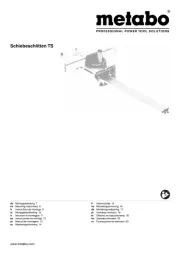
23 Juli 2025
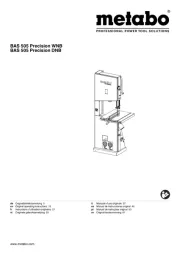
21 Mei 2025
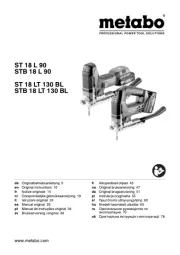
21 Mei 2025

15 November 2024

27 Mei 2024

3 Mei 2024

8 Januari 2024

8 December 2023

8 December 2023

13 November 2023
Handleiding Zaagmachine
- Dream Power
- Power Craft
- Pro-Cut
- Alpina
- Bestgreen
- Homelite
- Kraftronic
- Ferrex
- Flex
- Fein
- Exakt
- Kreg
- Alpha Tools
- Yard Force
- Dolmar
Nieuwste handleidingen voor Zaagmachine
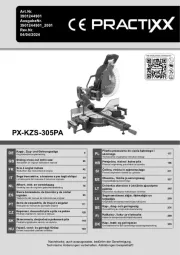
30 Juli 2025
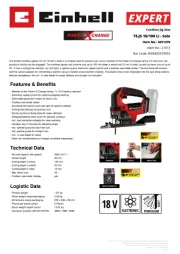
29 Juli 2025
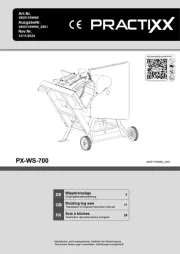
29 Juli 2025
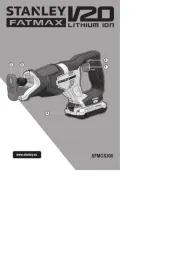
29 Juli 2025
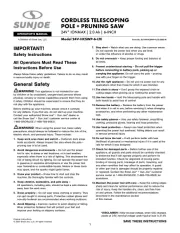
29 Juli 2025
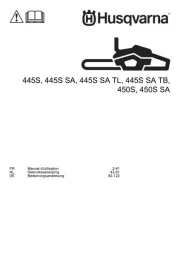
28 Juli 2025
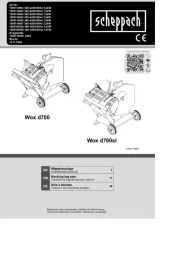
21 Juli 2025
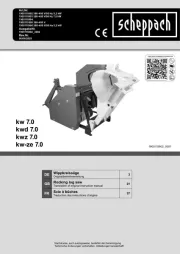
21 Juli 2025
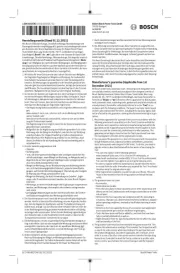
20 Juli 2025
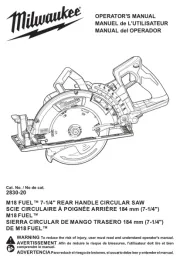
16 Juli 2025